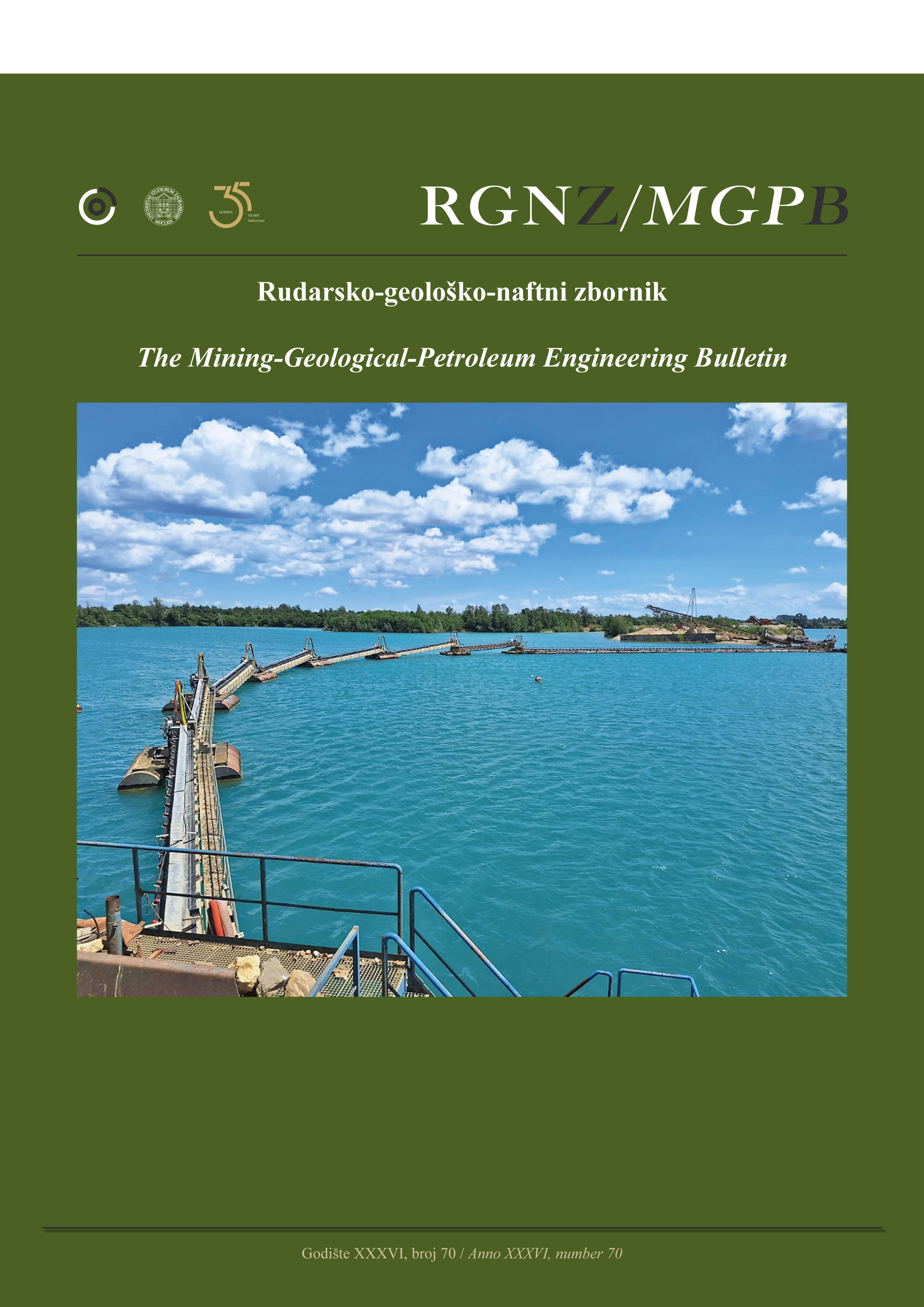Computational Simulation of Sediment Motion Stability Process on Bridge Abutment Due to Crib Placement (Case Study: Harapan River, Jayapura Regency)
Case Study: Harapan River, Jayapura Regency
DOI:
https://doi.org/10.17794/rgn.2024.4.6Keywords:
computational simulation, crib, Harapan River, sediment motion stabilityAbstract
Erosion occurs when the flow of velocity in a channel exceeds the threshold velocity that causes the bed material to move. This phenomenon is observed in the Harapan River, resulting in significant impacts, such as riverbed lowering and narrowing due to the presence of water structures (bridge abutments) spanning across the river. The objective of this study is to investigate the sediment motion stability around bridge abutments before and after the installation of cribs in order to prevent structural failures. Sediment sampling was conducted at six points around the bridge abutments, using the Pebble Count method along zigzag paths. The grain size of the bed material was classified according to the Sturgess classification standard, and the material dispersion process was analysed using the Hjustorm curve. Design rainfall was transformed into design flood discharge, which was then simulated using the Two-Dimensional Hydrodynamic, comparing the river conditions before and after crib installation. In abutments without cribs, erosion occurred in direct contact with the abutment on the right side for each sediment grain diameter. However, in abutments with cribs, erosion still occurred, but it did not directly contact either abutment despite the presence of a crib. The crib prevented and protected the abutments from being eroded by the riverbed.
Downloads
Published
How to Cite
Issue
Section
License
Copyright (c) 2024 Ira Widyastuti, Mujiati, Davy Ivan Robert Jansen, Ahmad Fauzi Yunus

This work is licensed under a Creative Commons Attribution 4.0 International License.
Creative Commons-BY
Authors who publish with this journal agree to the following terms:
In agreeing this form, you certify that:
- You read the ethical codex of the RGN zbornik available at journal web.
- You submitted work is your original work, and has not previously been published and does not include any form of plagiarism.
- You own copyright in the submitted work, and are therefore permitted to assign the licence to publish to RGN zbornik.
- Your submitted work contains no violation of any existing copyright or other third party right or any material of an obscene, libellous or otherwise unlawful nature.
- You have obtained permission for and acknowledged the source of any illustrations, diagrams or other material included in the work of which you are not the copyright owner.
- You have taken due care to ensure the accuracy of the work, and that, to the best of your knowledge, there are no false statements made within it.
- All co-authors of this submitted work are aware of, and in agreement with, the terms of this licence and that the submitted manuscript has been approved by these authors.
Publication licence
You retain copyright in your submitted work, according to journal license policy (CC-BY). By signing this form you agree that RGN zbornik may publish it under the publication licence. In summary the licence allows the following:
Anyone is free:
- To copy, distribute, display, and perform the work.
- To make derivative works.
Under the following conditions:
- The original author must always be given credit.
- The work may not be used for commercial purposes.
- If the work is altered, transformed, or built upon, the resulting work may only be distributed under a licence identical to this one.
Exceptions to the licence
In addition to publishing the work printed under the above licence, RGN zbornik will also enable the work to be visible online.
The journal editorial can change the licence rules anytime but it cannot retroactively restrict author(s) rights.


